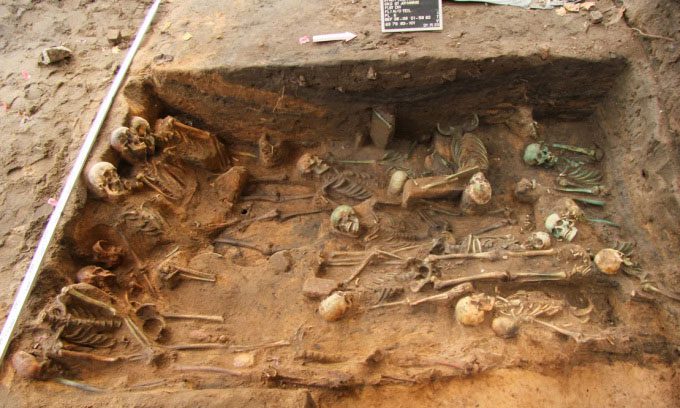Experts Discover a Site Likely to Be the Largest Mass Grave Excavated in Europe from the 1600s
During an archaeological survey prior to the construction of new residential buildings, experts uncovered a mass grave of plague victims near St. Sebastian Spital in the city center of Nuremberg, southern Germany, as reported by CNN on March 6. Approximately 1,000 human remains have been excavated, and the final count is estimated to exceed 1,500. The research team predicts that this could be the largest mass grave ever excavated in Europe.

Mass grave retaining remains of plague victims in Nuremberg. (Photo: In Terra Veritas).
According to Melanie Langbein, an expert at the Nuremberg Heritage Conservation Agency, eight burial pits have been identified, each containing several hundred remains. “These individuals were not buried in regular cemeteries, even though Nuremberg had cemeteries specifically for plague victims. This indicates that there was a large number of deaths that needed to be buried quickly without regard for Christian burial customs,” Langbein explained.
Since the 14th century, Nuremberg has experienced outbreaks of plague approximately every ten years, complicating the dating of the remains found near St. Sebastian Spital.
Archaeologists employed carbon dating techniques to establish that the mass grave dates from the late 1400s to the early 1600s. They also discovered pottery shards and coins from that period. Additionally, the team found a record from 1634 describing a plague outbreak that claimed over 15,000 lives between 1632 and 1633, stating that nearly 2,000 people were buried near St. Sebastian Spital.
This evidence led the research team to conclude that the ancient remains in the mass grave likely date from the 1632-1633 outbreak, which was more devastating than previous outbreaks due to the impact of the Thirty Years’ War—a series of conflicts among European nations from 1618 to 1648.
The mass grave provides a representative sample of the ancient community, allowing scientists to study the characteristics of the population at that time. “We can understand the scale and demographics of the city using tools similar to those employed by modern census teams today, including the ratios of children to adults, women to men, and general health,” said Julian Decker, an expert at In Terra Veritas, the company overseeing the excavation.
Next, the scientists will complete the excavation, clean, and analyze the bones. They will also collaborate with research institutes interested in specific aspects of the new findings, such as genetic analysis and parasitic eggs in the soil.




















































